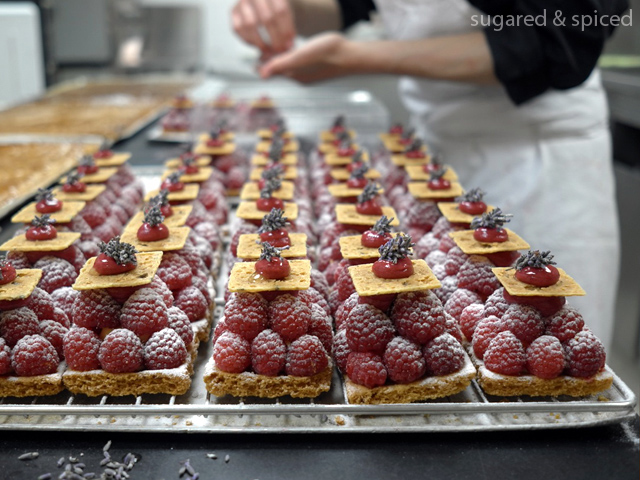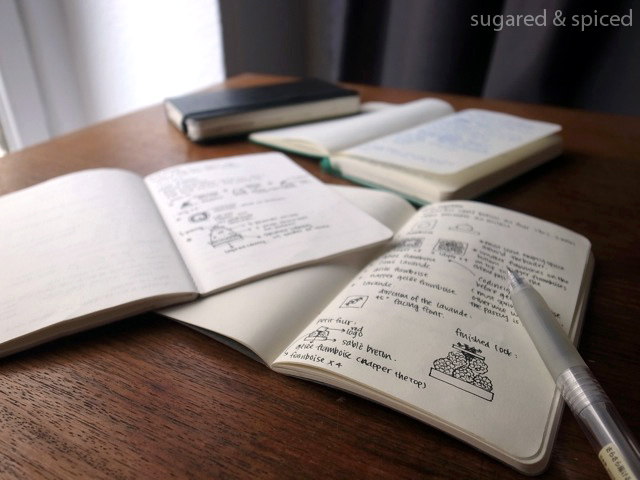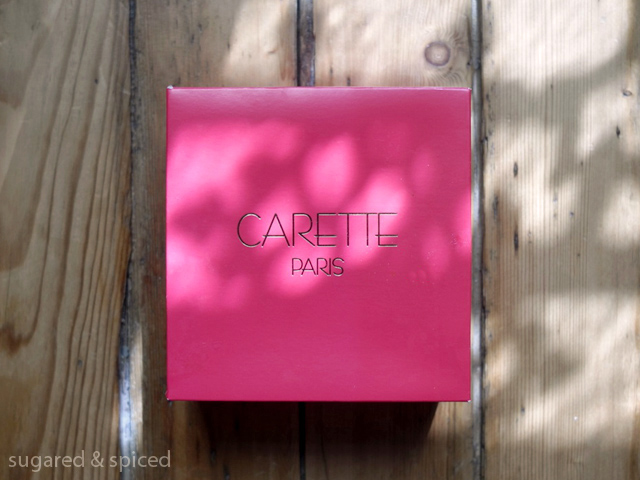Follow me on FACEBOOK, INSTAGRAM, TWITTER, & 微博!
Following my days at Un Dimanche à Paris and Fauchon, I spent the next five months of my pastry career at Carette, a classic Parisian pâtisserie/salon de thé that has been sitting on Place du Trocadéro* since 1927. Carette pastries, as you might remark from the photos in this post, are more traditional in comparison to those from UDAP and Fauchon, and it’s a style that I very much appreciated re-learning as I haven’t done much of this since leaving pastry school. My days at Carette were truly happy ones largely thanks to the lovely people I worked with, and the five months here really flew by despite the long hours. I only just left a few days ago, and am already missing the good moments in this pastry kitchen…
* There is also a second, newer Carette boutique at Place des Vosges.
**Because I only have shots of the kitchen, I borrowed the first four photos of this post from Carin/Paris In Four Months, a dear friend of mine who also happens to be a fan of Carette. Thank you love :)
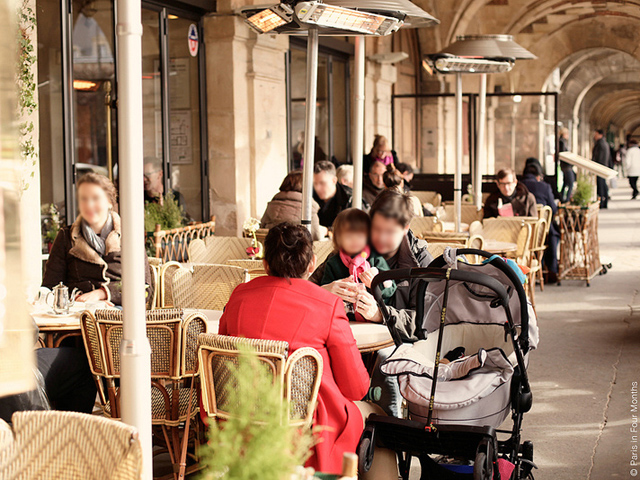
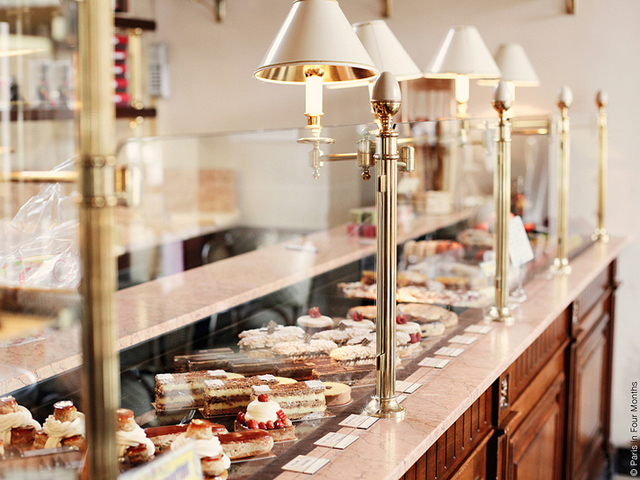
If you have read my previous pastry kitchen diaries, you know that life as a pâtissier isn’t as dreamy as how most people imagine it to be. For one thing, my days at Carette started at 4am everyday, which means that I had to wake up at 2:30am and bike to work since there is no metro at this hour, and there is no suitable night bus for my route. The journey wasn’t super long – about 20 minutes on the bike plus a few minutes walking – but it did involve going uphill (so I was often breathless when arriving at work), fickle Parisian weather (it said it wouldn’t rain this morning but of course it poured), frequent troubles with Vélib’ public bikes (flat tire, broken chain, missing paddle, or just no bike at all), and encounters with all sorts of fun characters (think drunk party goers and crazy football fans during the World Cup). Well, at least I got to burn off some calories…which I consumed right back as soon as I got to the kitchen. Freshly baked pastries for breakfast, who would say no to that?
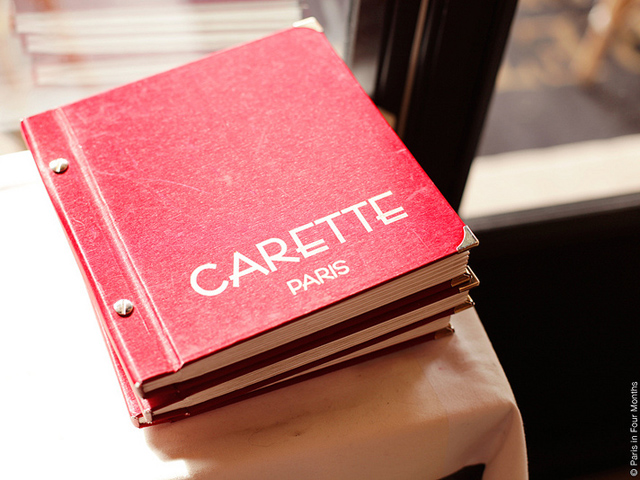
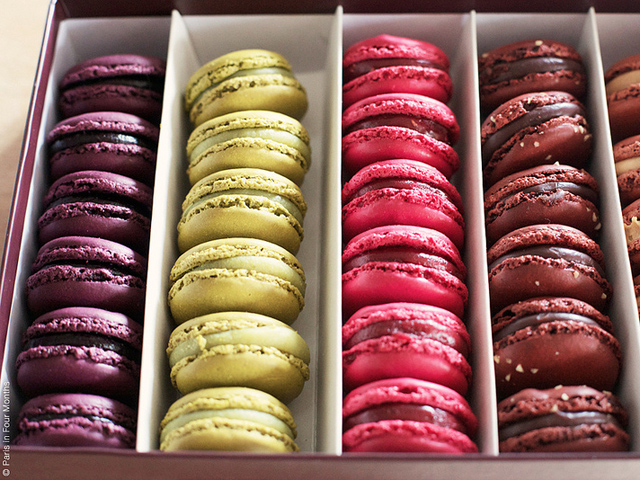
Leaving Fauchon and joining Carette was a very smooth process. I had a good feeling about the ambience even during my pre-contract trial day, and I fell in love with the people soon after I started here full time. The team is such a fun bunch and I got along with them so much so that going to work often felt like hanging out with friends (except of course we still have to move our butts to put out top quality work, and we do still get corrected/yelled at when we make mistakes). Needless to say, it helps a lot to have good ambience at work, especially considering how many hours we spend with one another in this small enclosed kitchen space.
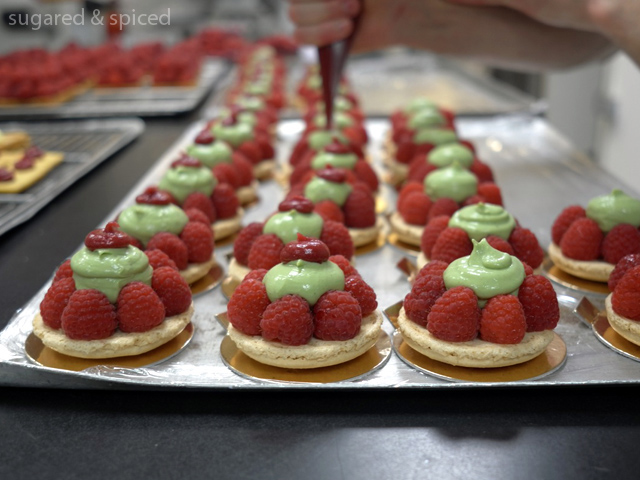
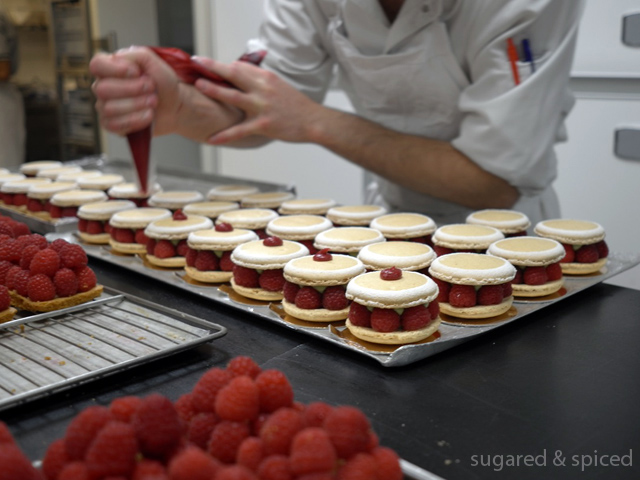
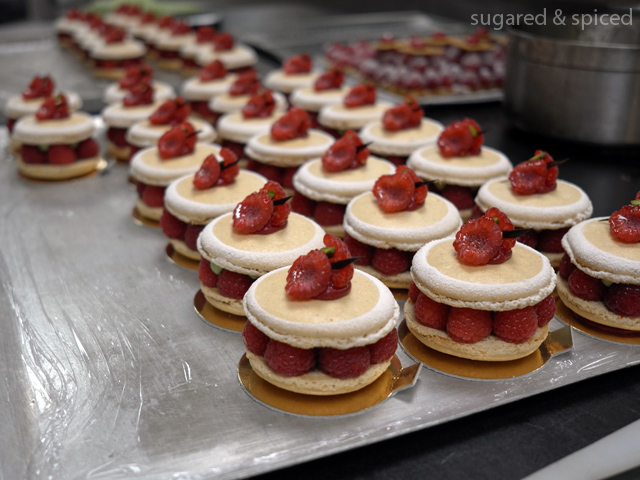
In terms of work content, I was given simple tasks at the beginning as my colleagues didn’t know me and how I worked, but in a bit of time I gained the trust of others and was allowed more and more responsibilities. To give you an idea of what my day-to-day is like at Carette, here’s a sample daily routine:
3:50am arrive at Carette, change and get ready for work.
4:00~7am la fournée: the finishing of all the pastries to be sold that day in the boutique.
7am end of la fournée, send pastries upstairs to the Trocadéro boutique and dispatch the rest to Vosges.
7~10am production.
10~11:30am garnish macarons.
11:30am~12:15pm lunch.
12:15~1pm last tasks.
1~1:30pm cleaning.
1:30~2pm packing macarons.
The finishing time is usually between 2 and 4pm, which means 10~12 work hours per day. Do note that not all of us start at 4am – there are some who start at 6am and others at 10am – so there are still colleagues working when I leave in the afternoon. The hours are quite long and can be tiring since we are on our feet all the time except during lunch, but this is not atypical for kitchens. It sure helps that we get constant and unlimited supply of coffee and pastries to keep us going ;)
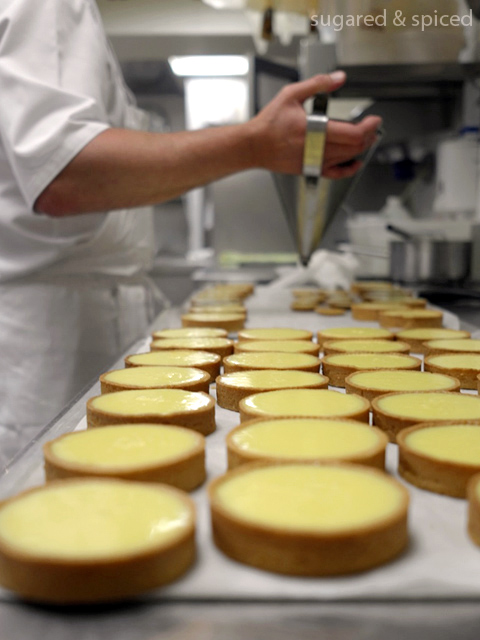
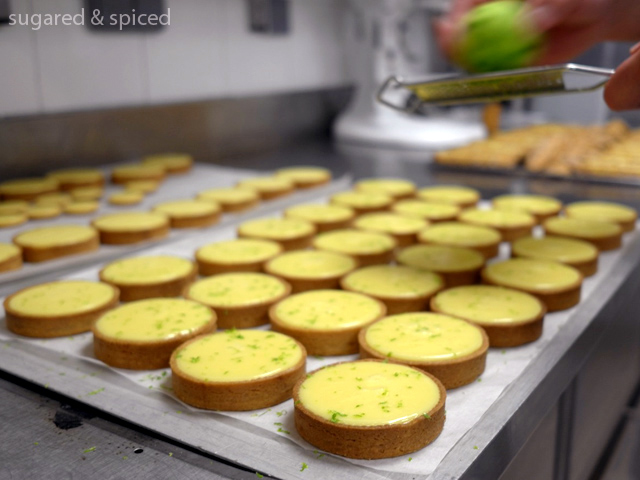
La fournée tends to be the most fast-paced/stressful time of the day, because we must finish assembling all the pastries before 7am. By “assembling pastries”, I mean garnishing the éclairs with cream, arranging raspberries on sablé breton to make the raspberry tart, or piping pastry cream on puff pastries to make the mille feuille. There are certain items, such as the tarte citron, that must be started early because the cream takes some time to set in the fridge, whereas other items, like the mille feuille, is usually done towards the later half of la fournée because the puff pastry is too hot to work with when it comes out of the oven. There are usually 3 or 4 of us during la fournée, and we work with one another to stay organized and finish the tasks as rapidly as possible (without compromising the quality of the work, of course).
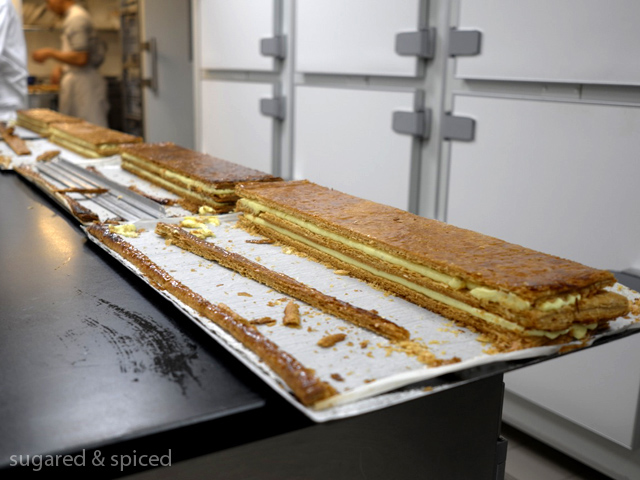
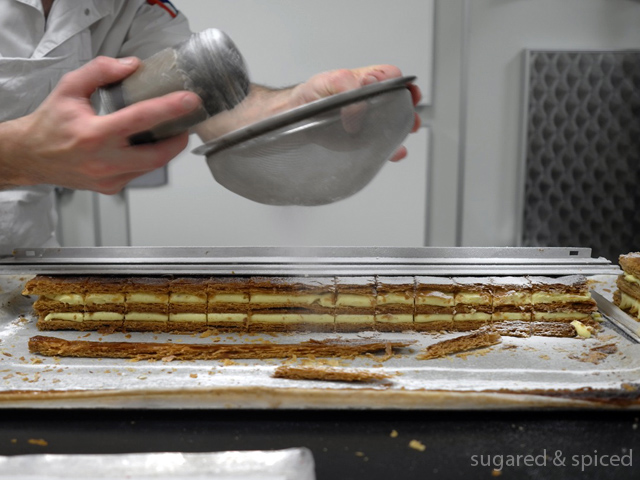
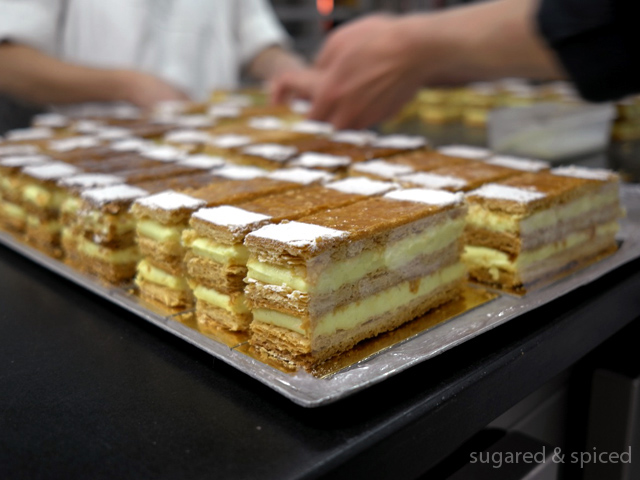
We make about 15 different types of pâtisseries, and every morning we get a list (as shown below) that tells us the quantity of each sort. The number varies, and usually increases as the week progresses (i.e. Monday is the least in quantity and Sunday is the most). On this particular Monday, for example, you can see that we were to make 260 entremets and 80 petits fours for Trocadero, and 160 entremets for Place des Vosges, making it a total of about 400 pieces of pastries (not including the breads and viennoiseries like croissants and pains au chocolat, which is done by another team).
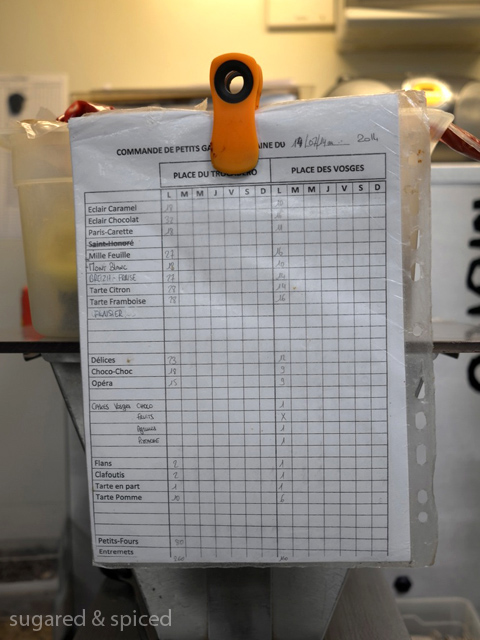
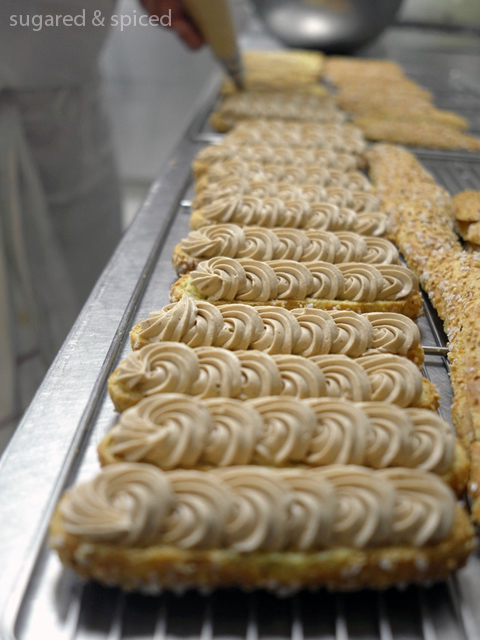
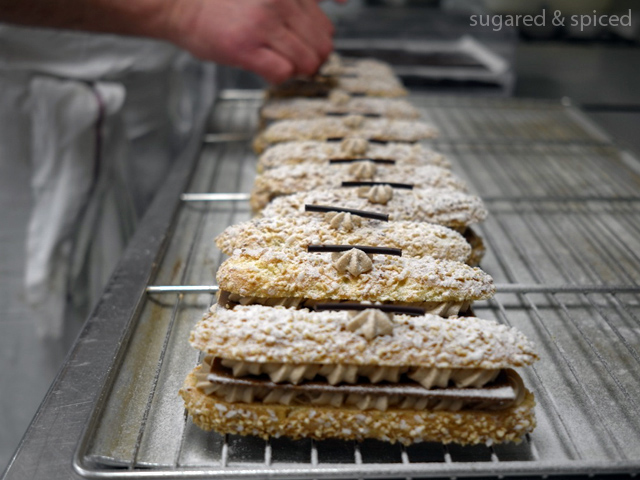
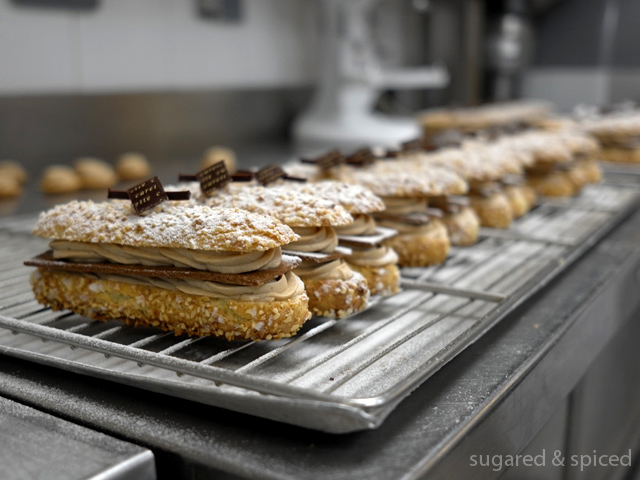
Right after la fournée is production, and this means different things for different people. For me, this usually starts with making apple tarts and fruit tarts (changes according to season), followed by making different types of batter like madeleine, financier, langue de chat, clafoutis, or baking biscuits like biscuit joconde or biscuic chocolat. For others, it can mean making the macaron cookies (which involves making the batter and operating the piping machine), doing the “gas work” (which means making all sorts of cream like pastry cream, flan, praline cream, lemon cream, etc.), or miscellaneous (read: boring) but obligatory tasks like like scraping baking plates or sous-viding things.
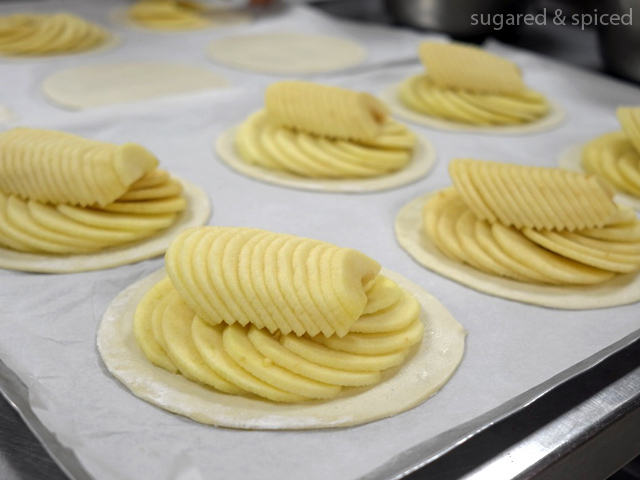
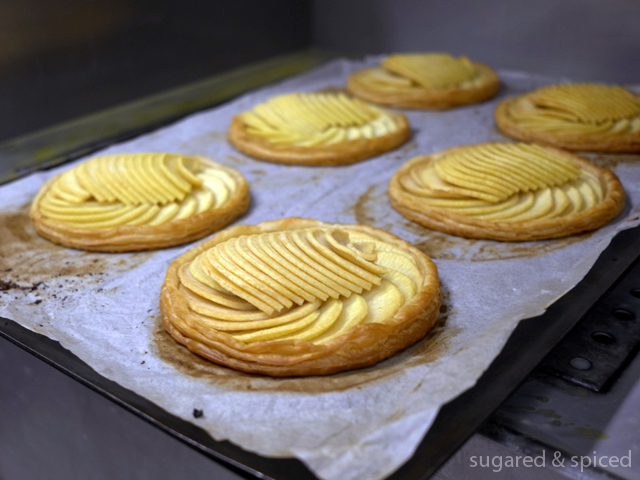
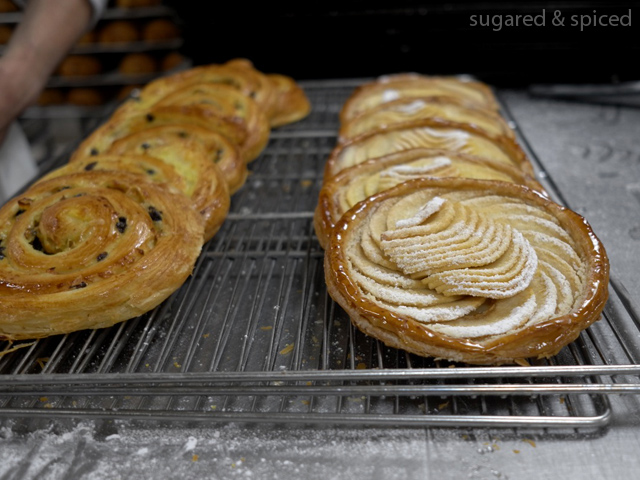
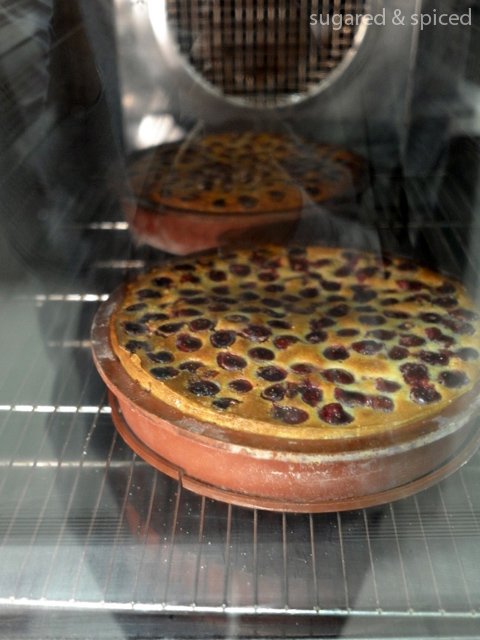
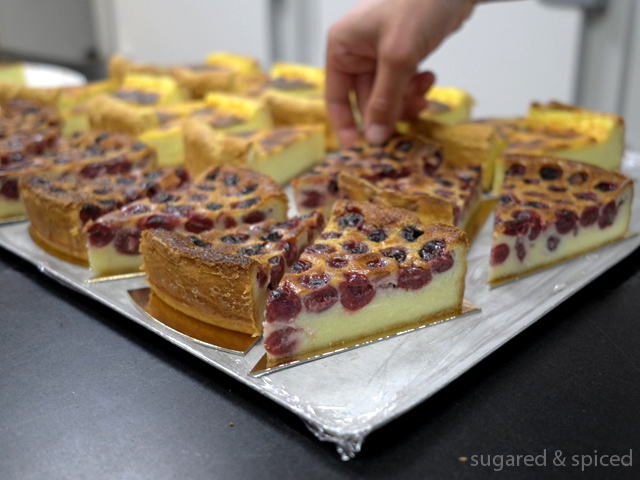
We spend an enormous amount of time doing macarons everyday. The process goes like this:
- separate egg whites from yolk, grind almonds into powder, and other miscellaneous mise-en-place tasks
- make batter for macaron cookies
- pipe macaron cookies by machine
- leave macaron cookies in open air to form a “skin”
- bake macaron cookies
- let macaron cookies cool
- turn over half of the macaron cookies
- garnish half of the macaron cookies with fillings
- close with another macaron cookie
- leave in fridge to set
- package macarons in plastic containers, sous-vide, and into paper boxes
- label with flavor and date, store in freezer
We make approximately 1500~2500 macarons a day and at least 15,000 macarons a week, which probably takes up 1/4 to 1/3 of our time in the kitchen. As you can imagine, it is a very, very repetitive process…but it’s about doing things better and faster. You think you can garnish macarons pretty fast? Well, try faster. For me, I’m grateful of having done this at Carette because both UDAP and Fauchon outsource macaron to a remote pastry kitchen, so it’s really at Carette where I learned how to do these almond meringue cookies properly.
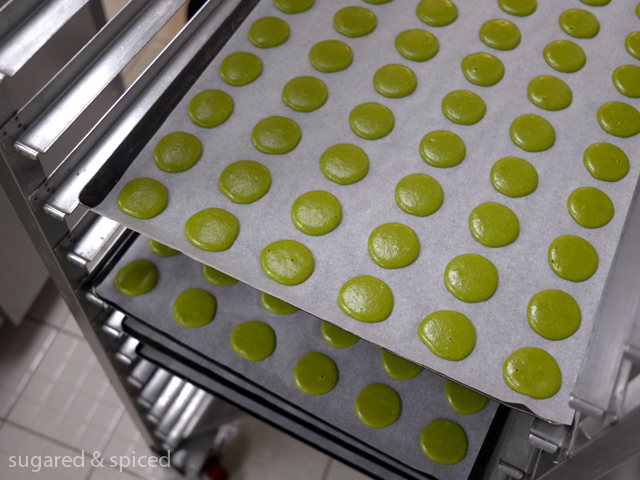
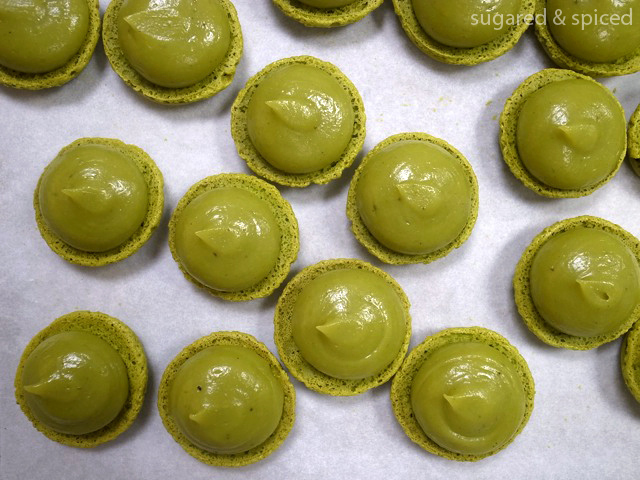
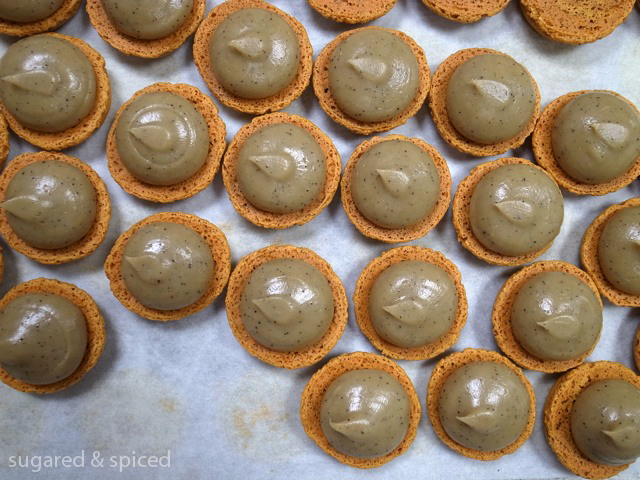
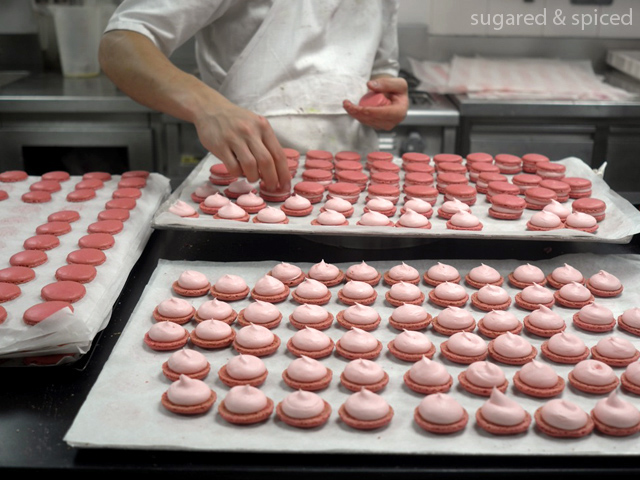
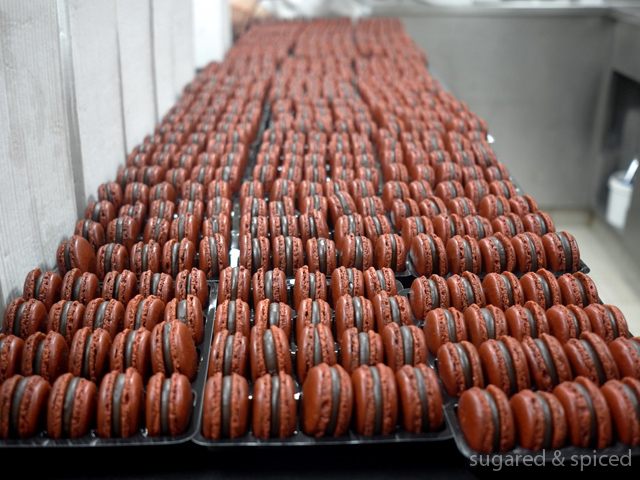
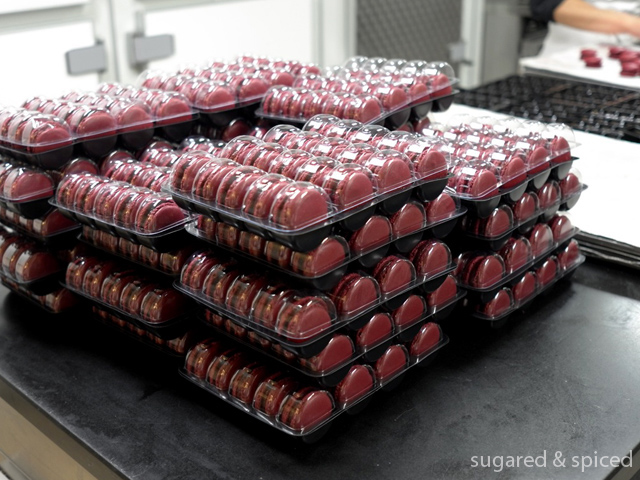
As mentioned earlier, there is also a boulangerie team at Carette with whom we work very closely. For example, other than making all the baguettes and brioches and croissants and pains au chocolat, they are also responsible for making the tart shells for our lemon tarts, the feuilletage for our mille feuille, the almond cream for our fruit tarts, etc. Here are some snapshots from the boulangerie side…
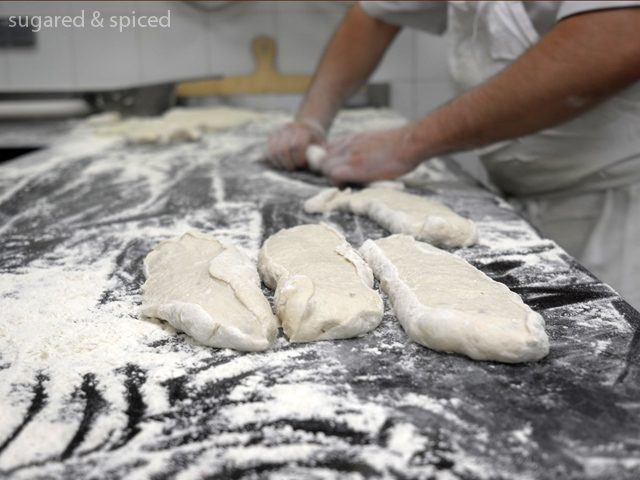
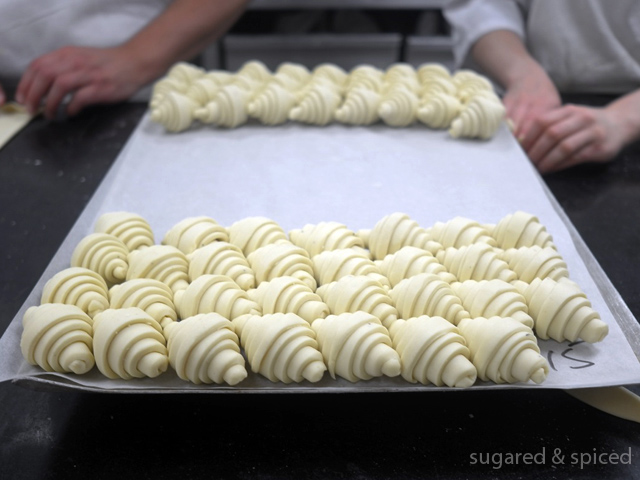
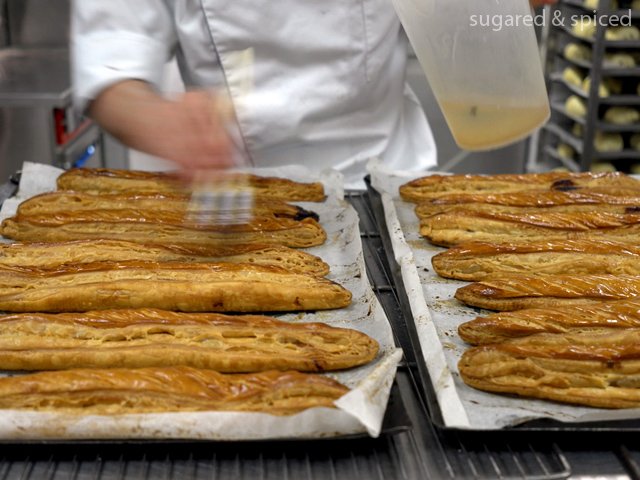
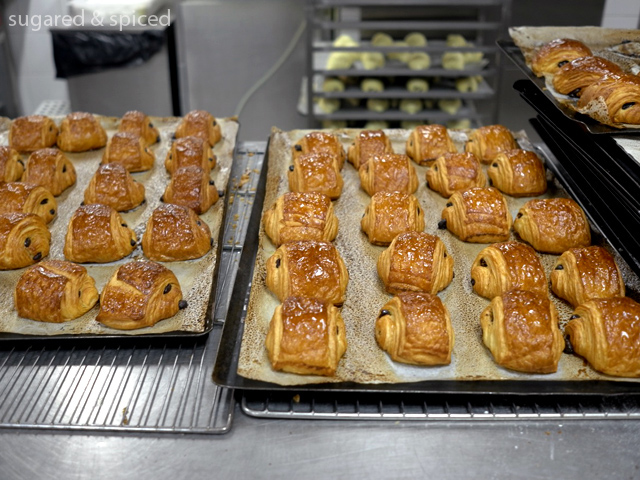
There, that’s a summary of my Carette days. The few months I spent here were filled with wonderful moments thanks to the people I worked with, and I can’t be grateful enough to have stumbled into this kitchen. I will be starting a new job next week, and a challenge it will be as I’m leaving the realm of boutique pastries to try out restaurant desserts for the first time. As some of you might know, restaurant desserts are very different in terms of style because they are plated and tasted immediately. This allows for more flexibility in presentation (the plate is the canvas) as well as temperature/texture (think hot chocolate sauce and ice-cream), which are not possible for boutique pastries as they must stay on display for at least one day. The work rhythm will also change drastically, for plated desserts must be finished à la minute as customers make their orders. Apparently some people love the rush, while others crumble under the pressure. How will I cope? We shall find out soon…
